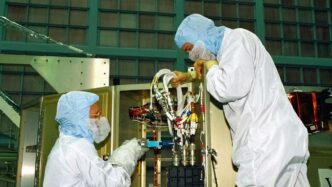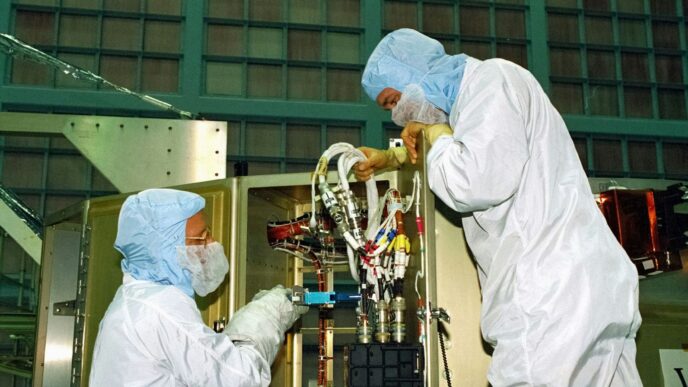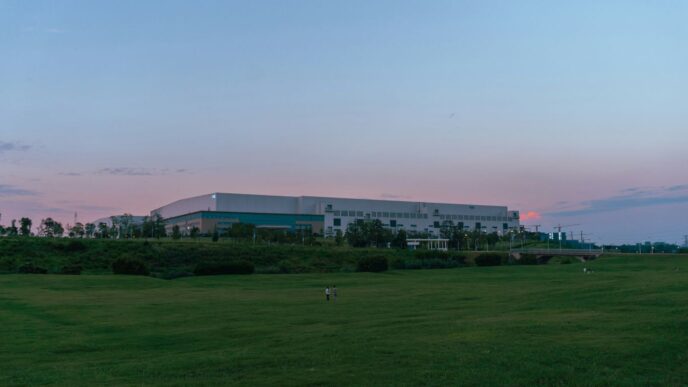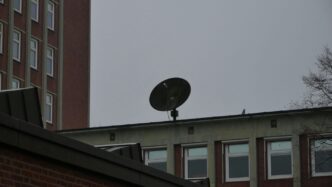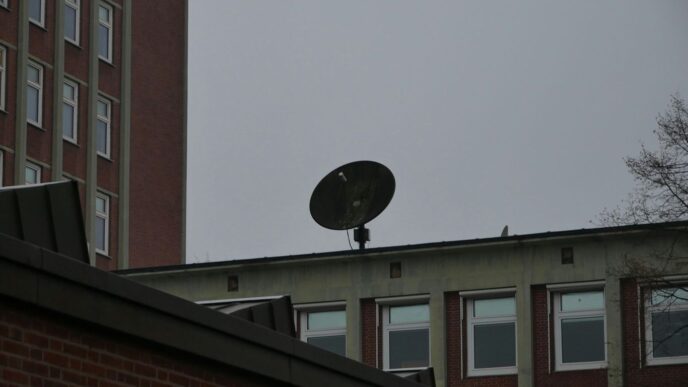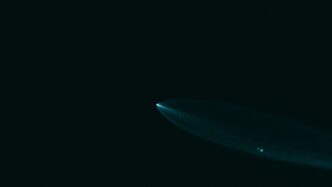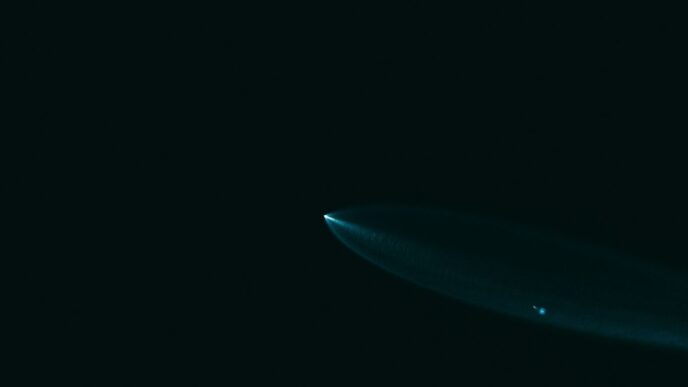Starship Flight 7: A Step Forward in Reusability
Starship’s seventh flight test, which took place on January 16th, 2025, was a significant step in the ongoing journey toward a fully reusable space transportation system. While not every objective was met perfectly, the data gathered from this flight is invaluable for refining future designs and operations. This test flight marked the debut of the Block 2 Starship, featuring a host of upgrades aimed at improving reliability and performance. The mission pushed the boundaries of what we’re learning about putting complex hardware through the rigors of launch, ascent, and reentry.
Mission Objectives and Block 2 Upgrades
The goals for Flight 7 were ambitious, focusing on testing new hardware and operational concepts. The Block 2 Starship upper stage brought several key improvements:
- Forward Flaps: These were redesigned with a smaller size and repositioned closer to the vehicle’s tip. This change aims to reduce their exposure to intense heat during reentry.
- Propulsion System: Significant upgrades were made, including a 25% increase in propellant volume, vacuum jacketing for feedlines, a new fuel feedline system for the vacuum Raptor engines, and an improved propulsion avionics module.
- Heat Shield: The latest generation of heat shield tiles was used, along with a backup layer, to provide better protection.
- Avionics Redesign: This was a major overhaul, adding more capability and redundancy. It includes a more powerful flight computer, integrated antennas for various communication functions, redesigned navigation sensors, smart batteries, and an increase to over 30 vehicle cameras for detailed flight monitoring.
Key Milestones Achieved During Ascent
The ascent phase of Flight 7 saw several critical events successfully executed. The Super Heavy booster and Starship upper stage lifted off as planned. The hot staging maneuver, where the Starship engines ignite before separating from the booster, occurred nominally. This is a complex procedure, and its successful execution is vital for the overall mission architecture.
The Role of Starlink Simulators
One of the new objectives for Flight 7 was the deployment of Starlink simulators. These were intended to test the Starship’s payload deployment capabilities in space before they would eventually splashdown in the Indian Ocean. While the full success of this specific payload test is part of the ongoing investigation, the attempt itself provides crucial data on how the Starship system handles such operations.
Super Heavy Booster Performance on Flight 7
Alright, let’s talk about the Super Heavy booster during Starship’s seventh flight test. This was a big one for the booster, aiming for another successful catch.
Successful Liftoff and Ascent
On January 16, 2025, the Super Heavy booster, designated B14, lifted off from Starbase right on schedule. All 33 of its Raptor engines roared to life, performing a full-duration burn all the way through ascent. This initial phase went smoothly, with the booster handling the immense forces of liftoff and climbing through the atmosphere. The rocket even had to deal with maximum aerodynamic pressure, or ‘max q’, and it handled that too.
Boostback Burn and Engine Relight Challenges
After the Starship upper stage separated, the Super Heavy booster fired up its engines for the boostback burn. This burn is designed to slow the booster down and send it back towards the launch site for a landing. On this flight, 12 out of the 13 engines that were supposed to relight for the boostback burn actually did. One engine had a low-power issue with its igniter system and didn’t start up. This is something SpaceX noted and planned to address with an igniter upgrade for future flights. Despite the single engine hiccup, the boostback burn completed successfully, setting the booster on its return trajectory.
Second Successful Booster Catch
Things got really interesting as the booster approached the launch site for its landing. It successfully relit all 13 engines needed for the landing burn, including the one that missed the boostback burn. This landing burn slowed the booster down enough for the launch tower’s catch arms to grab it. And guess what? They did it! This marked the second time SpaceX successfully caught a Super Heavy booster, and this time, the booster landed without any damage to its structure or engines. It was a pretty impressive feat, showing real progress in their goal of rapid reuse.
Starship Upper Stage’s Journey and Anomaly
Starship’s trip on Flight 7 was supposed to be a big step, especially with the Block 2 upgrades. These changes included smaller forward flaps, more fuel capacity, and a new system for the vacuum engines. The heat shield also got a refresh with newer tiles. Plus, the avionics got a major overhaul, adding more computers, better antennas, and a whole lot more cameras to see what’s going on.
Nominal Engine Ignition and Ascent Burn
Things started off looking good. The Starship upper stage’s engines fired up as planned, pushing the vehicle higher. It followed its expected path for a while. However, the ascent seemed a bit slower compared to previous flights, which was partly due to the extra weight from the new Block 2 features and the dummy Starlink satellites onboard. These simulators were meant to test deploying actual satellites later on.
Telemetry Loss and Rapid Unscheduled Disassembly
About two minutes into the upper stage’s burn, things took a turn. A flash was seen near one of the engines in the back, in an area called the ‘attic’. Sensors picked up a pressure increase, suggesting a leak. A couple of minutes later, another flash happened, and fires started in that same area. This led to most of the engines shutting down on their own. Sadly, communication with the ship was lost just over eight minutes into the flight. The vehicle broke apart about three minutes after losing contact, during its descent. It seems the safety system did activate as designed, and the breakup happened within expected limits.
Investigation into the Aft Section Fire
After looking at the data, the main reason for losing the ship seems to be a strong vibration issue in the engine area. This vibration was much worse than what they saw in tests. It put a lot of stress on the engine parts, causing fuel leaks. These leaks overwhelmed the venting system in the attic, leading to the fires. The investigation is focused on understanding why these vibrations were so intense and how to prevent them in the future. It’s a tough reminder that spaceflight development is a bumpy road, and every test flight, even the ones that don’t go perfectly, gives us vital information to make the next one better.
Learning from Flight 7: Data and Future Improvements

Flight 7 was a real learning experience, showing us that building rockets isn’t always a straight line to success. Putting this hardware through its paces in actual flight conditions is the quickest way to see how all the pieces work together, or sometimes, don’t. The data we’re getting from these tests is gold, helping us figure out what needs tweaking for the next go-around. This iterative process is key to making Starship truly reusable.
Addressing Harmonic Response in Raptor Engines
We saw some interesting data regarding the Raptor engines during ascent. Specifically, there were indications of harmonic resonance affecting a few of them. This isn’t entirely unexpected in a complex system like this, but it’s something we need to get a handle on. The team is digging into the telemetry to pinpoint the exact frequencies and conditions that triggered this. Future engine builds and software updates will likely include adjustments to mitigate these vibrations. It’s all about making sure those engines run as smoothly as possible, even under extreme stress.
Enhancements to Starship’s Attic Section
The ‘attic’ section of Starship, where a lot of the avionics and plumbing lives, is getting some attention. Based on Flight 7’s performance and the data collected, we’re looking at ways to better protect this area. This could involve improved insulation, better routing for lines, or even some structural reinforcements. The goal is to make this critical part of the ship more robust, especially considering the intense heat and forces it endures during ascent and reentry. We want to make sure everything up there stays functional, no matter what.
Iterative Development for Rapid Reusability
It’s important to remember that Starship is still very much in development. Each flight, successful or not in every aspect, provides invaluable information. For Flight 7, we saw the booster successfully caught again, which is a huge step. However, the ship experienced an anomaly. This is precisely why we fly these test missions: to find these issues while the system is still being refined. The plan is to take everything learned from Flight 7, apply it to the next vehicle, and keep pushing forward. It’s a cycle of build, fly, learn, and repeat, all aimed at getting to that fully and rapidly reusable system faster.
Navigating Debris and Safety Protocols

Okay, so Starship Flight 7 had a bit of a messy ending, right? When the upper stage broke apart, pieces of it ended up falling. This is where things get really interesting, because managing that falling debris and keeping everyone safe is a huge part of these test flights. SpaceX, along with the FAA and air traffic control, had a plan in place for this exact scenario. It’s called a Debris Response Area, and it’s basically a designated zone where they expect any falling bits to land.
Debris Management and Response Plan
When Starship Flight 7 went sideways, the pre-planned response kicked in. The good news? All the debris from the Ship 33 anomaly landed within that Debris Response Area. That’s a big win for the safety plan. SpaceX also mentioned that there weren’t any hazardous materials in the debris, which is always a relief. They immediately got in touch with the government of Turks and Caicos, as well as the UK, to figure out how to clean things up. Even though a test flight ending early isn’t ideal, this shows that the safety measures they put in place before launch actually worked to keep people out of harm’s way.
Coordination with International Authorities
It wasn’t just a local effort, though. Because Starship flies over international waters and its debris can travel, coordinating with other countries is super important. SpaceX worked with the Turks and Caicos government and the UK to sort out the recovery and cleanup of any pieces that landed there. They even had teams meeting to discuss the plans. People on the islands were asked to report any debris they found, but they were also told not to touch it without gloves, just in case. While SpaceX said there were no hazardous chemicals, it’s always better to be cautious.
Public Safety During Flight Operations
Keeping the public safe during these flights is obviously a top priority. The FAA actually had to slow down or divert air traffic around the area where debris was expected to fall. They even activated a special alert, a Debris Response Area, which tells planes to steer clear. This happened because, in this case, some debris did fall outside the usual hazard zones. While there were no reports of injuries, there was a report of a car getting a little dinged up in Turks and Caicos. It’s a reminder that even with all the planning, spaceflight is still pretty unpredictable. The FAA confirmed that debris fell outside the planned areas, which is why they had to step in with air traffic control.
| Agency/Entity | Role in Debris Management |
|---|---|
| SpaceX | Leads investigation, cleanup coordination |
| FAA | Monitors debris fall, manages air traffic |
| Air Traffic Control (ATO) | Directs aircraft around hazard areas |
| Turks and Caicos Govt. | Assists with local debris recovery |
| UK Authorities | Supports debris recovery efforts |
Looking Ahead: Preparing for Starship’s Next Flight
Alright, so Flight 7 didn’t go exactly as planned, but that’s kind of the whole point of these test flights, right? SpaceX is already digging into the data to figure out what happened, especially with that fire in the aft section of the Starship upper stage. The FAA is involved, as they always are, and they’ll be looking at everything before giving the green light for the next launch. It’s all part of this super fast, iterative process they’re using to get Starship ready for, well, everything.
FAA Investigation and Flight Authorization
So, after any flight, especially one that ends with a rapid unscheduled disassembly, the FAA needs to sign off. They’ll review all the information SpaceX gathered, look at the root cause of the issues, and make sure the right fixes are in place. This isn’t just a rubber stamp; it’s a serious process to make sure future flights are safer and more successful. They’ll be looking at the telemetry, the ground observations, and SpaceX’s own analysis of the anomaly. It’s a back-and-forth, for sure, but it’s how they keep things from getting out of hand.
Hardware and Software Updates for Future Flights
Based on what they learned from Flight 7, and even previous flights, there are always tweaks being made. We saw some pretty significant upgrades on the Block 2 Starship for Flight 7, like changes to the forward flaps to reduce heat during reentry and a beefed-up propulsion system. For the next flight, expect more of that. They might be refining the heat shield tiles, tweaking the avionics for better data or control, or even making changes to the Super Heavy booster based on its performance. Software gets updated constantly too, with new algorithms for engine control, flight path adjustments, and managing all those cameras they have on board. It’s a constant cycle of build, test, learn, and improve.
Continued Pursuit of a Fully Reusable System
Ultimately, the big goal here is a fully and rapidly reusable Starship. Flight 7 was a big step forward in some ways, like the second successful booster catch, but it also showed where more work is needed. The data from the Starship’s journey, even though it ended early, will be used to refine its reentry profile, its structural limits, and how it handles the intense forces of spaceflight. They’re not just aiming to get to orbit; they’re aiming to get there, do their job, and come back to do it again, quickly and reliably. Every flight, even the ones that don’t go perfectly, gets them closer to that vision.
What’s Next for Starship?
So, Starship’s seventh flight test was a bit of a mixed bag, right? We saw the Super Heavy booster get caught again, which is awesome progress. But the Starship itself had some issues and didn’t quite make it to its planned splashdown. It’s a good reminder that building something this complex isn’t always a straight line upwards. SpaceX is already looking at the data, figuring out what went wrong, and getting the next rocket ready. They’re aiming for full reusability, and each flight, even the ones that don’t go perfectly, gives them more information to get closer to that goal. The eighth flight is already being prepped, showing they’re not slowing down one bit. It’s all about learning fast and building better for the next try.



